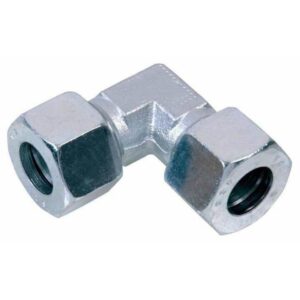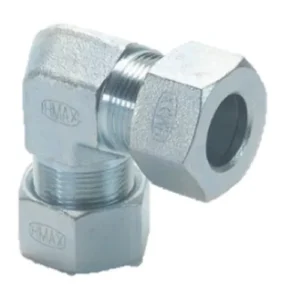Contact : +91-79045 61980 | Email: hydrofitengineers@gmail.com
Hydraulic Equal Elbow
Hydrofit Engineers, provide array of hydraulic equal elbow. It is a fitting which amongst other things is used for changing the direction of fluid flow in a system. It is referred to as an equal elbow in the size description, due to the fact that both outlets in the elbow are the same size. Hydraulic equal elbows are available in various sizes and designs to fit many hydraulic applications
Types of Hydraulic Equal Elbow
There are multiple types of hydraulic elbows in terms of design and size. The most popular form of them are here below but for more you may also explore hydraulic equal crosses for multi-directional flow applications.
90 degree elbows are the commonest type of hydraulic fittings. They are composed of an angular shaped fitting on either end with 90 degree angles. 90 equal elbows are applied in hydraulic systems where the change of direction is needed with nearly same flow quantities.

A 45 degree elbows are used in applications where the hydraulic carrier lines into a fixed position. They are an elbow 45 degree on both ends.

30 degree elbows are used in general coolant, water and oxygen systems. They are a 30degree angle on both fitting on one end They’re elbow shaped connectors.

Request a Quote to place order or make query
Materials Used For Hydraulic Equal Elbows
The hydraulic elbow are generally available in two material of constructions Carbon Steel, Stainless Steel operation: Also available in brass for pneumatic and other applications.
- Carbon Steel: Carbon Steel is the most widely used material for hydraulic elbows. It is also resilient to high pressure and temperature. Carbon Steel fittings are for use in lower pressure hydraulic systems.
- Stainless Steel: Stainless steel is designed for corrosive and high-temperature applications of the hydraulic systems. These stainless elbow find application in brewing, pharmaceutical, and chemical industries. Similarly, hydraulic equal tees are widely used for branch flow divisions in similar hydraulic systems.
- Brass: Commonly brass pipes are found in hydraulic systems in need of low pressure and don’t have corrosion-proof needs. These brass fittings are great for use with pneumatic and hydraulic applications.
Installation of Hydraulic Equal Elbows
It is vital to accurately fit these elbows for normal working and no leakages in future. Following are the instructions for setting hydraulic elbows :
Blow out the fittings: Ensure that all the fittings are clear and free from any debris prior to installation. Anything that may still remain of dirt and impurities in the fittings mixed with the oil, so that it comes to damage to the hydraulic system.
Put thread sealant on the hydraulic elbow: It is necessary to put thread sealant on the male threads of the hydraulic elbow. The thread sealant provides a tight seal against leaks and needs to be threaded into the fitting and hydraulic system.
Retighten the fittings: Tighten the fittings by hand before using a wrench to get them to manufacturer’s torque recommendation. Leaking and hydraulic damages MAY result if the fittings are over-tightened of under-tightened.
Test the hydraulic: Test the hydraulic system for leaks and proper function after your slide out is installed. Any leaking should be fixed as soon as possible to avoid damage to the hydraulics.
These elbows are vital to hydraulic systems. They are flexible enough to flow around curves without substantial subsequent change in the flow rate.
